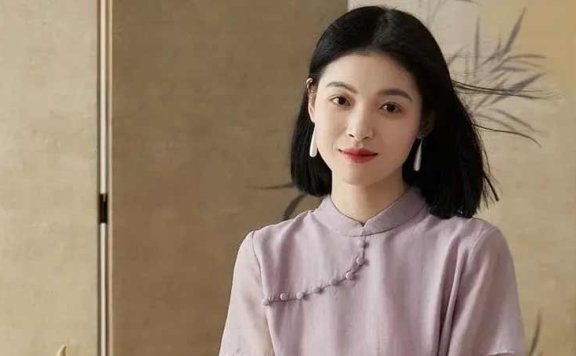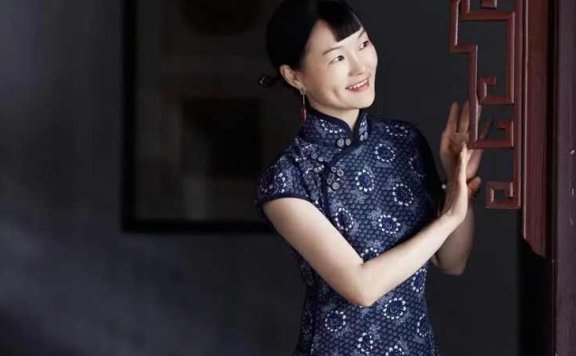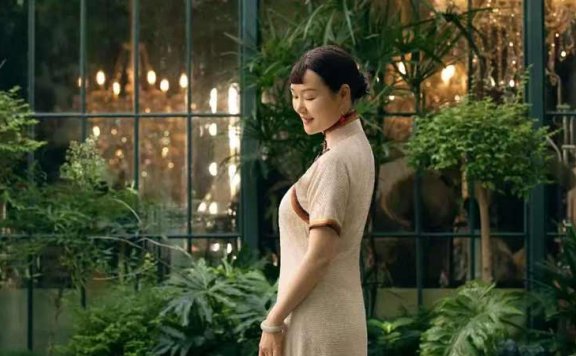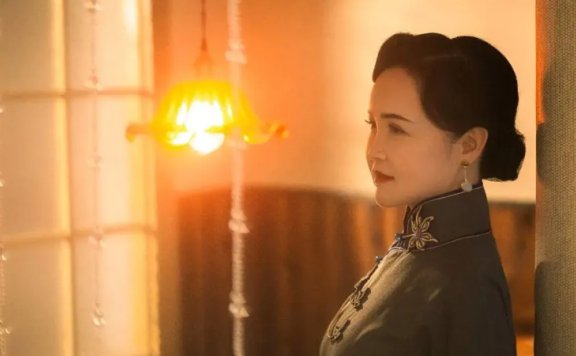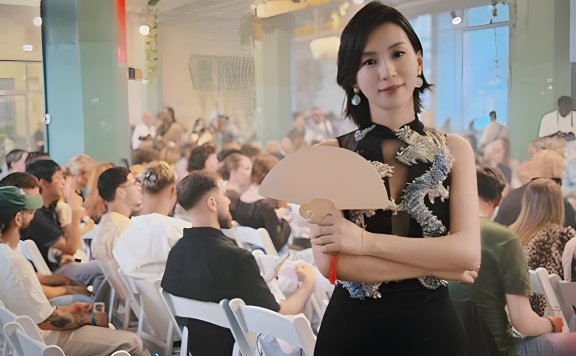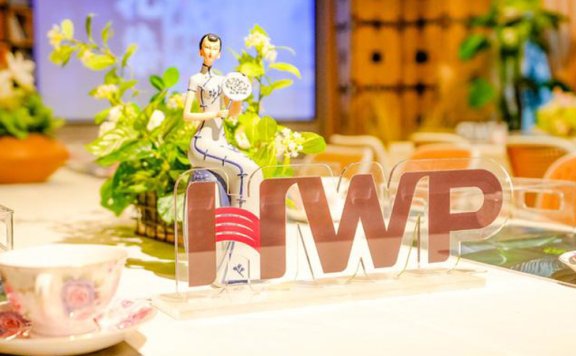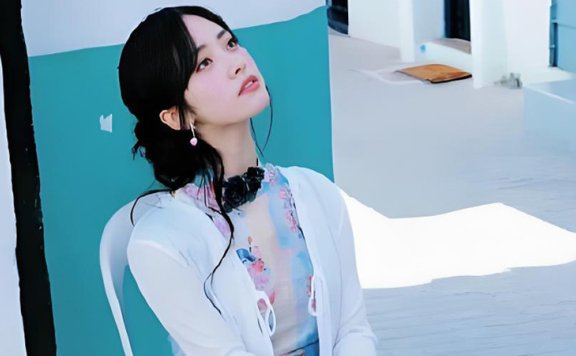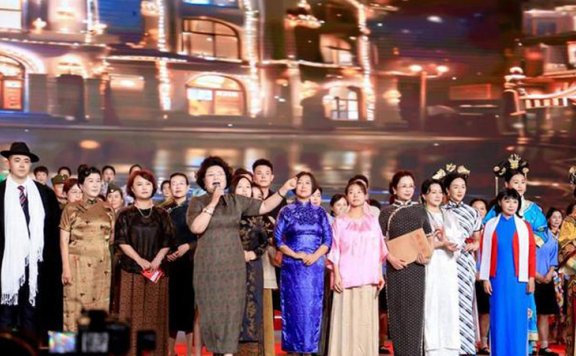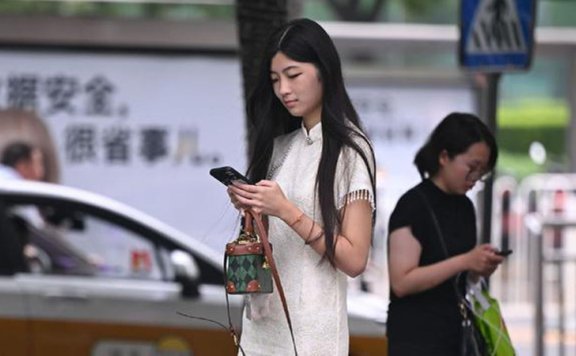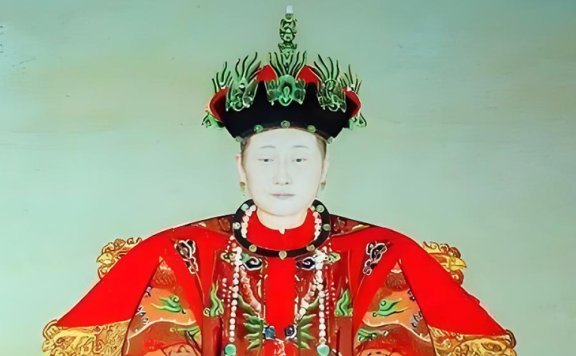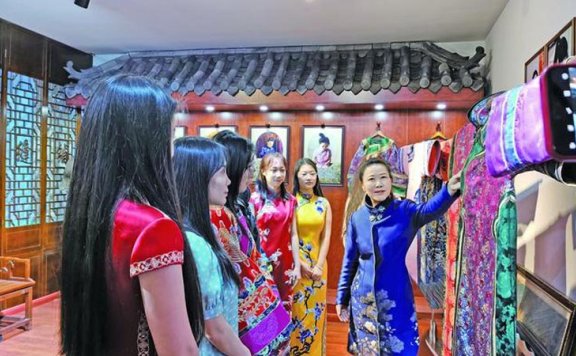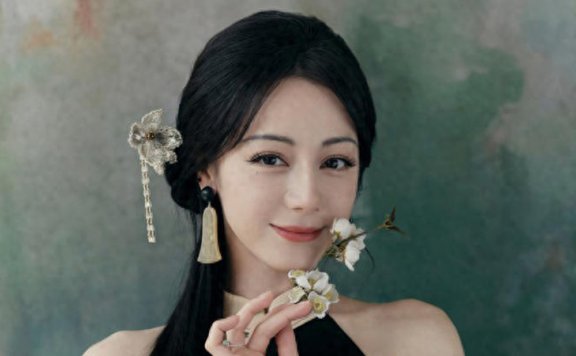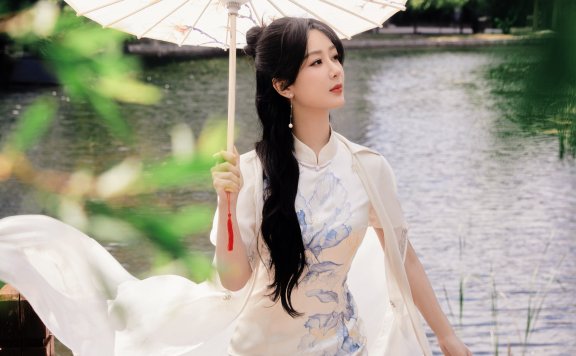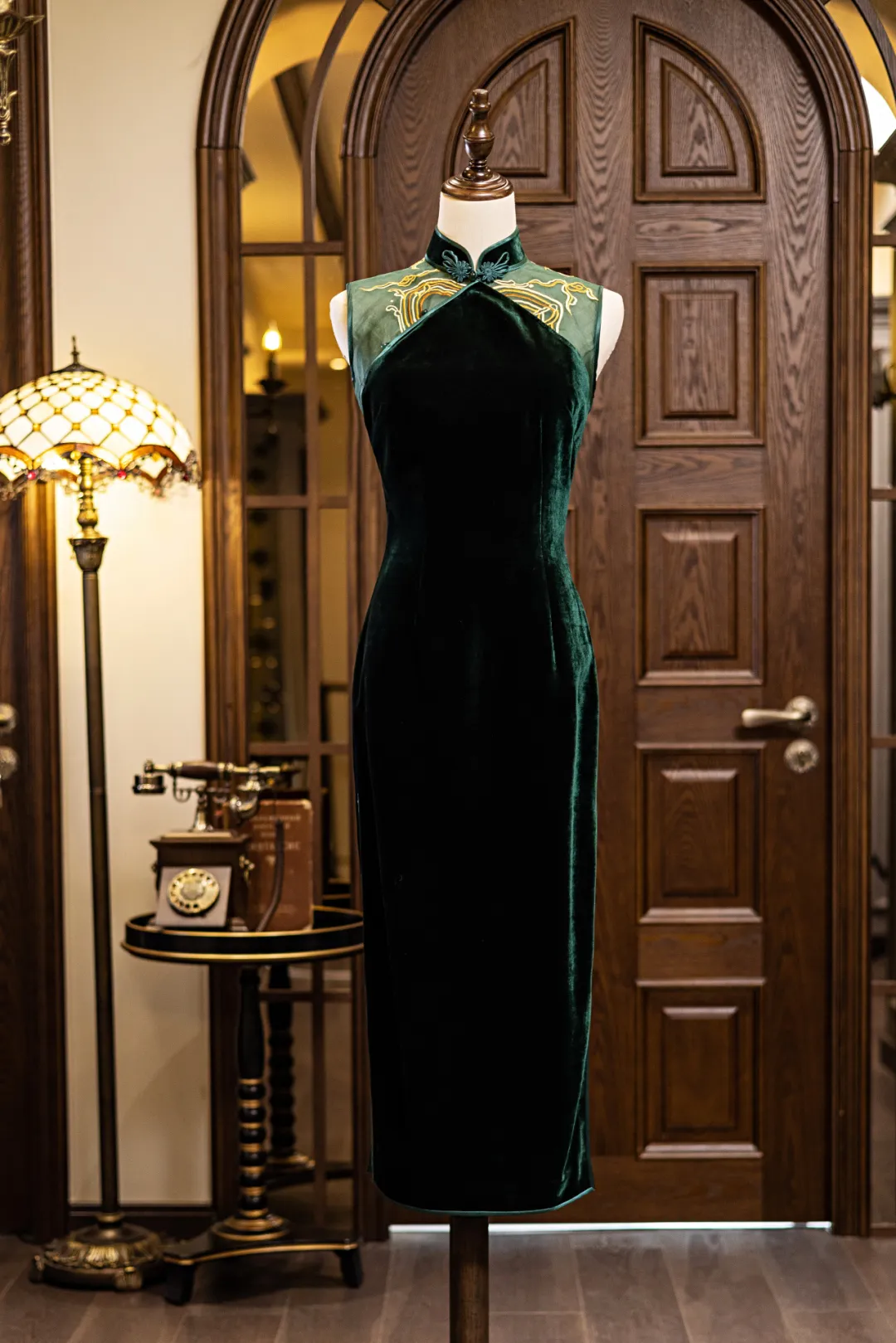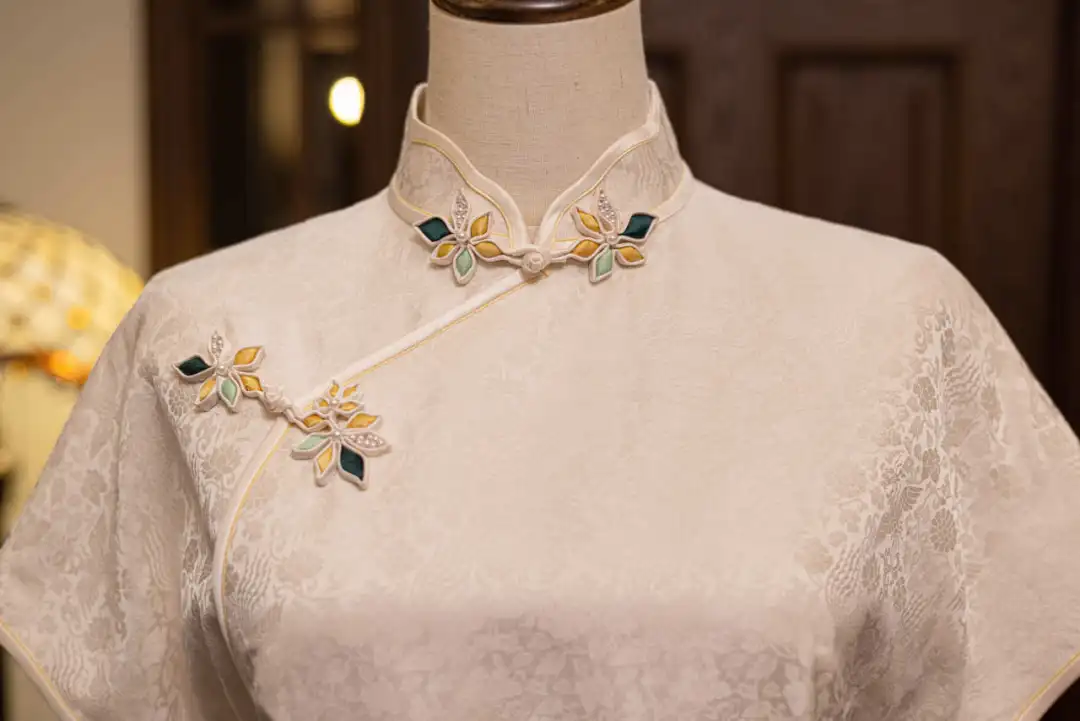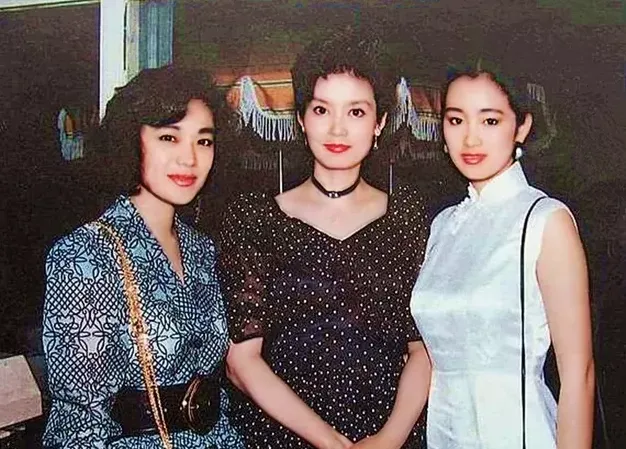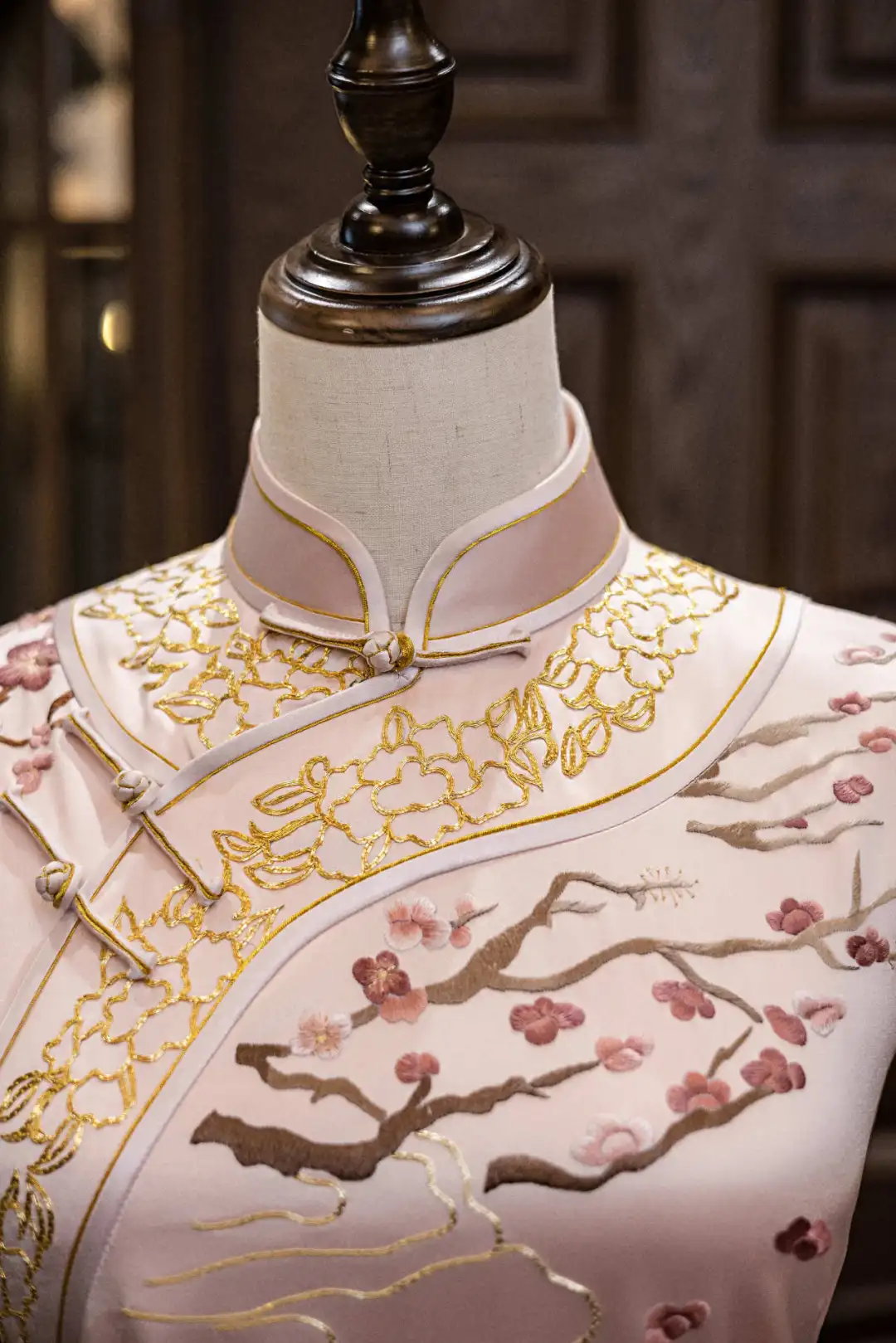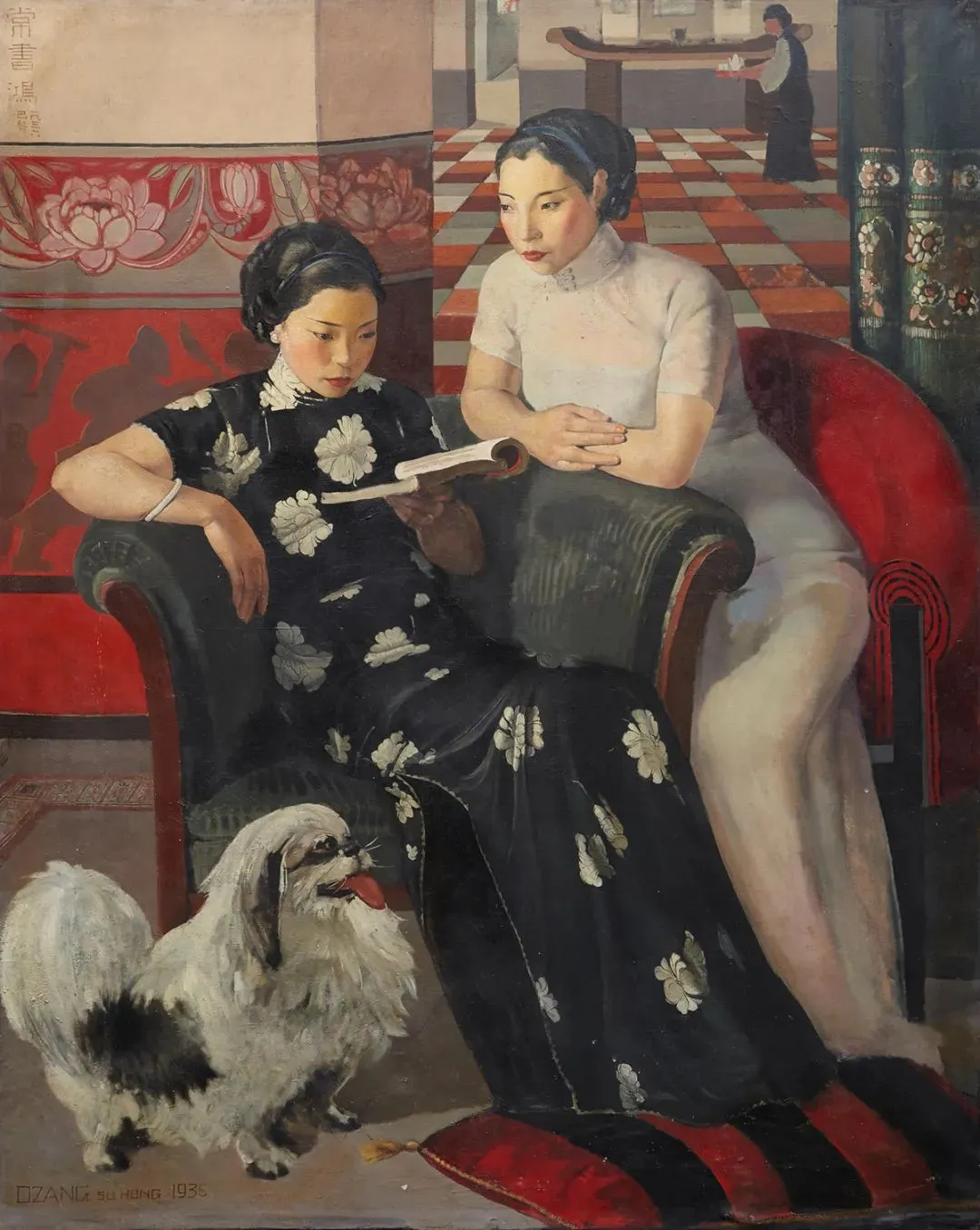Article
搜索结果:
-
Modern Qipao: Organdy Fabric Merges Tradition, Ease
The Qipao has evolved into a symbol of contemporary grace, blending centuries-old Chinese aesthetics with modern comfort. Today's reinterpretations, like those made from Tencel Organdy, offer a refreshing take on classic silhouettes. This fabric mimics silk's luxurious feel while adding structure and coolness, making the dress ideal for everyday wear. With inclusive cuts that flatter all body types and designs that evoke timeless beauty, these dresses empower wearers to express their unique style. As we delve into their key features, you'll see how this garment captures the spirit of cultural renewal without sacrificing practicality. Design The dress boasts a classic Chinese stand-up collar, renowned for its refined and translucent texture. This element enhances elegance without restricting movement, effortlessly complementing various face shapes and outfit combinations. Its simplicity avoids fussiness, making it suitable for both casual and formal settings. The collar's airy quality ensures comfort while adding a touch of sophistication to the overall look. Faux diagonal plackets with cloth-covered buttons add a nostalgic charm, reminiscent of vintage fashion eras. This detail creates visual interest without overwhelming the modern lines, offering a subtle homage to traditional craftsmanship. The buttons are meticulously crafted, providing a tactile experience that elevates the dress's artisanal… -
Cool Qipao: Secrets to Sweat-Free Summer Style
As temperatures soar, the timeless elegance of the Qipao remains a coveted choice. Yet, many hesitate, fearing the traditional dress might trap heat and compromise comfort during sweltering months. This concern, however, needn't mean sacrificing style. With thoughtful selections in design, fabric, and detailing, the Qipao transforms into a surprisingly cool and breezy summer staple. Discover how to embrace this iconic garment while staying perfectly comfortable, ensuring you look effortlessly chic whether strolling city streets or attending a garden soirée. Neckline Wisdom The collar plays a crucial role in summer comfort. Opting for a medium-low or low collar significantly enhances breathability compared to the high, closed styles often seen. This adjustment preserves the Qipao’s inherent grace and classical charm while allowing air to circulate freely around the neck. A lower neckline offers practical advantages beyond mere cooling. It lends a sense of openness, visually elongating the neck and softening facial contours for a more flattering silhouette. This subtle exposure strikes the perfect balance, maintaining the dress's dignified allure without venturing into excess. Ultimately, selecting an appropriate collar height is about harmonizing tradition with modern comfort needs. It allows the wearer to project an image of refined elegance, embodying sophisticated Eastern… -
Finding Your Perfect Shape: The Art of Qipao Length
Selecting the ideal Qipao length is far more than a simple measurement; it's a nuanced decision shaping elegance, proportion, and personal confidence. This iconic garment demands careful consideration of individual physique, the occasion it will grace, and the specific design language of the dress itself. The right length acts as a sculptor, enhancing natural lines and creating a harmonious silhouette, while an ill-fitting choice can inadvertently highlight areas one might prefer to subtly downplay. Understanding how different lengths interact with your body and the garment's inherent flow is paramount to unlocking the Qipao's timeless allure. The Evolution of Qipao Length The journey of the Qipao length reflects shifting societal norms and practical needs. Early iterations in the 1920s, heavily influenced by late Qing Dynasty styles, often featured dramatically long hemlines, sometimes even brushing the floor. This required wearers to lift the skirt while walking, a style impractical for contemporary life. By the 1940s, wartime austerity measures and a push for practicality led to significant shortening, with lengths typically settling around the mid-calf area. While functional for daily movement, this specific mid-calf length can, by modern standards, sometimes visually truncate the leg line, potentially making the wearer appear shorter or wider… -
The 5 Beauties of the Qipao Woman
The Qipao transcends mere attire—it embodies a century of Chinese femininity, resilience, and artistry. In Changde’s July gathering, the Qipao Cultural Association illuminated this legacy. Beyond intricate silks and precise tailoring lies a philosophy: where fabric becomes poetry, and seams trace cultural evolution. This event wasn’t a fashion showcase but a dialogue with history, inviting wearers to discover their narrative within each fold. 1. Allure A well-cut Qipao honors the body’s architecture. Its high collar frames grace, while the bias-cut skirt flows with natural movement, celebrating curves without constraint. This subtlety defines allure—confidence worn softly. As Changde’s members demonstrated, it’s not about spectacle but harmony: a shoulder line echoing porcelain-vase curves, sleeves hinting at restraint. True allure lives in posture. When standing like bamboo—spine straight yet supple—the Qipao’s slits reveal just enough to intrigue. Modern wearers blend tradition with individuality: pairing classic brocade with minimalist jewelry, letting fabric speak louder than adornment. 2. Nobility Nobility emerges from self-possession. Experienced Qipao wearers in Changde moved with unhurried precision, their embroidered gowns radiating authority. Gold-threaded phoenixes or indigo-dyed linens became extensions of their composure—proof that luxury is presence, not decoration. This elegance rejects rigidity. A laugh lines the eyes, hands gesture fluidly—nobility… -
Han Yang's Qipao Revolution in Paris on July 19th
The spotlight at Mulhouse Fashion Week on July 19th fell not on a Parisian couturier, but on Shenyang-born designer Han Yang (韩炀). As the final model exited the runway, thunderous applause filled the French venue. Han, founder of the brand Lan Miaoxi (岚妙晞), had presented a collection that transcended mere fashion. Her haute couture Qipao series, "Urban Memory," reimagined the iconic Chinese garment through a bold fusion of Shenyang’s soul and Parisian savoir-faire. This debut wasn’t just a personal triumph; it marked a significant moment where Chinese design philosophy, articulated through the Qipao’s rebirth, commanded global attention on a prestigious European stage. The collection served as the centerpiece of Shenyang’s official 2025 Qipao Cultural Season, signaling a deliberate push to showcase regional culture internationally. Design Han Yang dismantled traditional Qipao expectations. While honoring signature elements like the mandarin collar and intricate knotted buttons, she discarded restrictive silhouettes. Her designs employed advanced French tailoring techniques – think sculptural shoulders and fluid, bias-cut skirts – granting unprecedented freedom of movement. This liberation mirrored the contemporary spirit she sought to embody. The fabrics whispered tales of two worlds: lustrous Chinese silks met delicate French laces and intricate passementerie. French tambour embroidery, traditionally adorning… -
Taikang Life's Tapestry: Qipao and Tie-Dye in Modern Shenyang
Taikang Life Insurance Liaoning Division transforms Shenyang's summer into a vibrant cultural canvas, merging ancient craftsmanship with contemporary urban life through its immersive "Qipao and Tie-Dye" workshop. This initiative bridges millennia-old traditions and modern financial wellness, positioning Taikang as a cultural steward beyond insurance. Hands-On Heritage Participants gathered on July 21, guided by master artisans to manipulate silk and dyes. Folding fabric into geometric patterns, they dipped cloth into indigo vats—a tactile dance connecting past and present. Each participant’s creation reflected personal aesthetics, from abstract swirls to mountain-inspired gradients. The tactile process revealed tie-dye’s alchemy: oxidation turning fabric from jade green to deep blue. Taikang Health Wealth Planners (HWP) facilitated sessions, their expertise in client customization extending to cultural mentorship. One planner noted,"Like tailoring financial security, dyeing requires patience—both transform raw potential into enduring value."This synergy between tactile artistry and advisory precision reshaped perceptions of "insurance professionals" as culture-bearers. Beyond technique, the workshop honored intangible heritage. Tie-dye’s resist-dye methods—dating to China’s 6th century—echoed in every knotted thread. Participants handled tools unchanged for generations: wooden frames, bamboo sticks, and hand-mixed plant dyes. The scent of fermented indigo and murmur of shared discoveries filled the space, crafting collective memory. Qipao Reimagined The… -
Shen Yue's Neo-Chinese Qipao in Marrakech
The sun-drenched alleys of Marrakech recently witnessed an unexpected fusion of East and West as Chinese actress Shen Yue (沈月) unveiled her distinctive take on neo-Chinese fashion. Against the backdrop of terracotta walls and vibrant souks, her ensembles transformed the Moroccan city into an impromptu global runway. This wasn't merely a celebrity trip; it became a visual dialogue where contemporary Chinese design resonated with North African heritage, proving style transcends geographical boundaries. Shen's curated looks—featuring reinvented qipao silhouettes and fluid outerwear—ignited discussions about cultural reimagination, positioning her as an ambassador for a new wave of Asian aesthetic innovation on the global stage. Silhouettes Against Medina Walls Shen’s signature look featured a dark-patterned qipao reinterpreted with modern cuts. The high collar and intricate embroidery paid homage to tradition, while the streamlined silhouette aligned with contemporary minimalism. Paired with wide-leg silk trousers, the ensemble moved with effortless grace through Marrakech's labyrinthine streets. Her styling choices amplified the visual narrative. A low ponytail threaded with delicate silver beads echoed traditional Chinese hair ornaments, yet its simplicity felt strikingly modern. This subtle accent drew attention to the architectural lines of her outfits without overwhelming them. The masterstroke came with an ivory, wide-sleeved overdress. Flowing… -
Qipao Gala Illuminates Hangzhou with Charity and Culture
On July 19, 2025, Hangzhou International Expo Center transformed into a living tapestry of Chinese elegance as thousands gathered for the Qipao Night Star Charity Concert. Organized by the Huaxia Qipao Culture Institute, CMF International Insurance Elite Roundtable, and Mingqi Hui Art Center, this philanthropic spectacle fused heritage craftsmanship with contemporary artistry, raising the curtain on a night where tradition met philanthropy under the glow of celestial stage lights. Century-Old Threads Revived The evening’s centerpiece, Centuries of Qipao, transported audiences through time. Directed by Jia Rui (贾蕊), founder of Huaxia Qipao Culture Institute, the stage drama meticulously chronicled the garment’s evolution. Over 100 performers—including insurance elites like Guo Juxiang (过菊香) and Lu Xiaomei (卢小美)—embodied iconic figures from Empress Dowager Cixi to songstress Teresa Teng. Qing dynasty brocades gave way to republican-era simplicity, wartime austerity, and modern reinterpretations, each transition underscored by dynamic lighting and period-specific scores. Historical accuracy extended beyond fabric. Performers replicated Song Qingling’s (宋庆龄) poised diplomacy and revolutionary heroine Jiang Jie’s (江姐) defiant silhouette, using archival imagery to authenticate postures and accessories. A multimedia backdrop projected rare photographs of Shanghai’s 1930s jazz era, while live erhu melodies bridged decades. The segment culminated with a tableau of Deng Xiaoping’s… -
How Patent Leather Redesigns the Classic Qipao Shape
The fusion of tradition and modernity finds a striking expression when an 8cm black patent leather stiletto meets a light-hued sleeveless qipao. This pairing transcends mere aesthetics, crafting a visual dialogue between centuries-old elegance and contemporary boldness. The qipao’s fluid lines, tracing the wearer’s form with poetic restraint, collide with the shoe’s architectural precision—a juxtaposition that captures the essence of today’s East-meets-West fashion philosophy. Far from a clash, this synergy reveals how heritage evolves through deliberate disruption. Contrast as Harmony Light-colored qipaos—in shades reminiscent of misted jade, lotus root, or moonlit porcelain—exude a serene, painterly quality. Yet this subtlety risks fading into monotony without strategic punctuation. Enter the black patent stiletto: its liquid-like gloss slices through the qipao’s matte texture, creating a tension akin to ink blooming on rice paper. This interplay of light and shadow elevates both elements, transforming simplicity into sophistication. The sharpness of the stiletto’s silhouette disrupts expectations. Where traditional qipao footwear (like embroidered flats) softens the profile, the stiletto’s dagger heel and tapered toe inject dynamism. The verticality of the qipao’s mandarin collar and diagonal closures finds resonance in the shoe’s lengthening effect, sculpting a statuesque line from neck to ankle. This geometry subtly channels modernity… -
Shenyang's Role in the Birth of the Qipao During the 17th Century
In 1625, Shenyang became the capital of the Later Jin dynasty, setting the stage for a pivotal cultural transformation. By 1636, a deliberate sartorial shift – the codification of the iconic qipao robe – became instrumental in forging a new national identity under Hong Taiji (皇太极). This strategic wardrobe revolution, intertwined with imperial marriages and geopolitical maneuvering, cemented Shenyang’s legacy as the cradle of a garment that would later symbolize Chinese elegance worldwide. The story unfolds through political unions, battlefield victories, and a calculated rebranding of an empire. The Fabric of Alliance Hong Taiji’s marriage to Borjigit Hailanzhu (博尔济吉特.海兰珠) in 1634 was far more than a personal union; it was a calculated geopolitical chess move. Upon her arrival in Shenyang’s fledgling imperial court, Hailanzhu exchanged her traditional Mongol deel – a loose, belted robe suited for the steppes – for the structured, collarless, side-fastened qipao mandated by her new husband. This act transcended mere wardrobe change; it was a visible symbol of allegiance and assimilation. Hong Taiji recognized the potent legitimacy carried by the Borjigit lineage, descendants of Genghis Khan’s revered "Golden Family" who ruled vast swathes of Eurasia. Marrying Hailanzhu, and subsequently several other Borjigit women including the famous… -
Jia Shujuan: The Design Beauty of Manchu Qipao
Beneath the cool summer skies of Mudanjiang, Heilongjiang, a living tapestry of tradition unfolds each evening. Dozens of models from Tang Man Culture Company grace parks and plazas, their Manchu qipaos—with sculpted collars, coiled buttons, and artful slits—blending ancestral grace with modern silhouettes. Led by Jia Shujuan (贾淑娟), a provincial intangible heritage inheritor, this daily procession embodies a cultural renaissance where every stitch narrates millennia of Manchu wisdom. Craftsmanship Reimagined Jia’s studio produces over a thousand unique qipaos annually, each a canvas of innovation. Regional motifs merge with ink-wash paintings and botanical dyes, transforming silk into storytelling mediums. The garments honor Qing Dynasty techniques likepan jin(coiling gold) embroidery, while contemporary cuts accentuate natural forms. Seasonal inspirations yield breakthroughs like the Ice-Snow Qipao. Jagged hems mimic glacial formations, while hidden snowflake cutouts along slits create "moving snowfall" illusions under light. This dialogue between environment and craft reflects Jia’s philosophy: "Technology is the bone, culture the soul, nature the muse." Nature’s Silent Language Heilongjiang’s wilderness breathes within every design. Wild tussah silk, harvested locally, provides the foundation. Artisans hand-paint patterns using roots, berries, and leaves—forest hues whispering through fabric. Peonies bloom across bodices, cranes soar on sleeves, each element distilling Northeast China’s… -
Dilraba: Redefining Modern Chinese Qipao on Global Stage
As Chinese cultural aesthetics gain global traction, actress Dilraba (迪丽热巴) emerges as its most captivating ambassador. Her recent fusion ensembles—a deconstructed qipao and an ink-wash gown—transcend mere fashion statements, weaving historical reverence with contemporary audacity. This exploration delves into how her sartorial choices ignite cultural pride, challenge design boundaries, and crystallize a new era of "Eastern Glamour." The Revolutionary Qipao Rebirth Dilraba’s black-and-gold qipao shattered conventions at a recent gala. Its asymmetric silhouette—featuring a single sculpted sleeve and strategic cutouts—balanced tradition with rebellion. Gold embroidery snaked across midnight silk, evoking dynastic opulence while the exposed shoulder whispered modernity. This architectural masterpiece proved heritage wear needn’t be archival. The ensemble’s genius lay in its disciplined restraint. Unlike ornate historical qipaos, Dilraba’s version used negative space as artistry. A solitary golden phoenix clasp anchored the neckline, while the split skirt revealed flashes of leg sans vulgarity. Every element served the garment’s narrative: China’s past reimagined for fearless futurists. Her styling amplified the revolution. Matte crimson lips contrasted with ink-black hair swept into a low chignon. No jade bangles or dangling earrings distracted; instead, a single gold ring echoed the gown’s metallic threads. Minimalism magnified the garment’s structural audacity. Social media erupted. Weibo… -
5 Care Tips for Silk Qipao Dress
1. Ironing Care Our Qipaos are crafted from silk and handmade. For the sake of safe transportation, they are packed in waterproof packaging. Once you receive it, use a steam iron at a low temperature to iron the Qipao. After ironing it smooth, let it sit for 10 - 15 minutes before trying it on. During the ironing process, avoid dripping too much water to prevent water stains. 2. Washing Care Due to the special nature of the fabric and craftsmanship, refrain from washing the Qipao with water on your own. We recommend taking it to a dry cleaner. 3. Storage Care Before storing the Qipao, iron it flat and then hang it up (avoid using metal hangers to prevent rust stains from contaminating the garment). Store it in a place away from moisture and sharp objects. It's not advisable to store it together with spun silk or fur clothing. 4. Sun Exposure Prevention Silk is a protein fiber, and long - term exposure to the sun can cause the protein to denature, leading to yellowing, decay, or discoloration of the silk. Hence, don't expose the Qipao to the sun for extended periods. 5. Wearing Care Silk fibers are delicate… -
Autumn and Winter: The Ideal Time for Velvet Qipao
Autumn and winter are indeed the perfect seasons for velvet. How can these seasons be complete without velvet? Its rich nobility, combined with a low - key yet luxurious velvety texture, makes it irresistible to many, thanks to its unmistakable aristocratic charm. Although its history can be traced back to the ancient Warring States period, velvet truly gained popularity during the Republican era. Inspired by cultural shifts and restoration movements, women started wearing streamlined and loose cheongsams, where velvet showed its unique allure. Take Soong Mei - ling (宋美龄), the First Lady of the Republic, as an example. Whether she was visiting the U.S. or attending important events, she always favored a fitted velvet cheongsam. Dignified, luxurious, and subtly elegant, her choice solidified velvet's status as a symbol of nobility and identity. Recommend a Velvet Gown Seizing the romance of October, I'm recommending an exquisitely simple yet elegant velvet gown named Huaman. Inspired by the dark - green Datura, it symbolizes mystery and eternal vitality. Made from silk velvet, its dense pile shimmers in different shades, like a precious relic from an ancient castle. The understated aristocratic charm, along with the serene dark - green color, creates a visually stunning… -
Explore the Sleeve Types and Styles of Qipao
In the world of Qipao, sleeve selection is crucial! In Qipao making, sleeves are an extremely important part. They not only help the skirt and waist achieve a slender silhouette but also accentuate the delicate beauty of the shoulders and neck. Moreover, a uniquely - designed and romantic sleeve is like the icing on the cake, an extension of decoration and an enhancement of beauty. Today, I'll focus on the sleeve types and styles of Qipao and discuss what kinds of sleeves it has. Classic Qipao Sleeve Types Sleeveless: A versatile Qipao style, it's light and simple, allowing the arms to be more fully exposed, which helps elongate the arm lines and create a slender figure. Shoulder Sleeve: The shoulder and sleeve parts are connected, creating soft shoulder lines and highlighting the overall feel of traditional Qipao, naturally fitting the curve of our shoulders. It's especially friendly to ladies with narrow shoulders and is often used in younger - styled Qipao. Moon Sleeve: Based on the sleeveless design, a small sleeve is added, softening the shoulder lines and providing some coverage for a slimming effect. Ultra - short Sleeve: Slightly longer than the moon sleeve, offering better coverage for the… -
Choose the Right Collar of Qipao Dress
In the previous article, I introduced the main sleeve types of Qipao. Today, let's explore the details of Qipao collars. Don't underestimate the collar's role. A well - chosen Qipao collar can visually enhance and beautify, highlighting the elegance and classical charm of Qipao. It's the starting point of a Qipao, and a perfect beginning sets the tone for the rest. So, let's look at different Qipao collar types. Round - Cornered Stand - Up Collar The round - cornered stand - up collar is the most classic and common type, named for its soft and rounded edges. It suits most people, being highly inclusive while retaining the elegance and delicacy of Qipao. There are high and low variations. The high one has a stronger three - dimensional effect, looking more crisp and decisive, and easily showing the slender and reserved temperament of Eastern women. The low one has a gentler and more well - behaved feel, fitting younger, casual styles. Square - Cornered Stand - Up Collar The square - cornered stand - up collar has right - angle edges, exuding a strict, dignified, and grand feel. It suits many, but those with square faces should be careful as… -
Gong Li's Red Carpet Looks: A History of Qipao Aesthetics
If there's any Chinese actress who knows how to wear a Qipao best, Gong Li undoubtedly tops the list. As an ambassador promoting Qipao culture, Gong Li has been showcasing the beauty of Chinese aesthetics to the world since her debut at international film festivals in 1988. Today, I'd like to focus on Gong Li and explore the remarkable chapters she has written with Qipao over the decades, as the most accomplished and influential Chinese actress in global cinema. Through her choices and presentations, we can rediscover the beauty, charm, and versatility of Qipao in different contexts. In 1988, Gong Li attended the Cannes Film Festival for the first time to promote her film King of the Children. Her youthful face was complemented by a pearl - white jacquard Qipao with subtle patterns, marking the beginning of her iconic association with Qipao. In the early days, her Qipaos were understated—short sleeves paired with a narrow skirt, adorned with delicate handmade floral buttons and statement earrings, creating a perfect balance of elegance. Even when standing alongside actresses like Sylvia Chang and Pan Hong, Gong Li radiated grace. 1990: Elegant Curve In 1990, at the Cannes closing ceremony, she wore another white… -
How to Choose Qipao for Lantern Festival
The Lantern Festival, as the last important festival in the Chinese Spring Festival customs, is an ancient festival that has lasted for more than two thousand years. In the ancient Chinese calendar, the first lunar month is called the Yuan month. According to Shuowen Jiezi, "Yuan" means the beginning, and "Xiao" means night. The 15th day of the first lunar month is the first full - moon night of the year, a time when everything begins anew and spring returns to the earth. So, this day is called the Lantern Festival, also known as the Shangyuan Festival. Since there is a custom of hanging lanterns on this day, it is also called the Lantern Festival. There are also some religious origins among its many meanings. In Taoist culture, as recorded in Dream of the Liang Record written by Wu Zimu in the Song Dynasty, "The 15th day of the first lunar month is the Yuanxi Festival, the time when the Heavenly Official of Shangyuan bestows blessings." In the Southern Dynasties, Imperial Decree of Emperor Yuan of Liang also recorded that "Shangyuan is the time when the Heavenly Official bestows blessings; Zhongyuan is the time when the Earthly Official pardons sins;… -
A Quick Guide to the World of Qipao Prints
Today, I want to talk about the patterns and prints of Qipao. Prints are the soul of a Qipao, a distinct marker that lights up the dress, sets its style, and reflects the wearer's artistic charm. In traditional Chinese culture, they're not just decoration; they carry auspicious meanings, adding cultural depth to the Qipao. The exquisite craftsmanship subtly conveys style and beauty, a method linked to aristocratic aesthetics. Indeed, Qipao has always symbolized noble beauty, a blend of status and refined taste. From centuries - old silk traditions to meticulous hand - crafting, every detail makes Qipao a rare work of art. Among these elements, prints play a crucial role. Today, let's explore the beauty and types of common Qipao prints. Floral Prints Floral prints are the most widespread in Qipao designs. From spring orchids to autumn chrysanthemums, and various plants, they serve as the main focus, accents, or borders. These designs draw on plant characteristics and symbolism, with auspicious meanings and people's aspirations for beauty. The plum blossom, or 'Five Blessings Flower,' symbolizes longevity, success, peace, happiness, and luck due to its five petals. As the first spring flower, it's the 'Queen of Flowers' and a top 'Four Gentlemen'… -
When Painters Meet Qipao: A Collision of Arts
Qipao, with its profound cultural heritage and sartorial charm, has served as a unique muse for countless artists, inspiring diverse expressions and creations. Today, I'd like to explore the different charms and beauty of Qipao as depicted in paintings. Xu Beihong, a foundational figure in modern Chinese art, was one of the most influential painters in 20th - century China. He pioneered the introduction of Western realism into Chinese painting, blending the 'linear modeling' of Chinese art with Western 'light and shadow structures,' innovating without losing essence. His oil painting 'Portrait of Miss Jenny' is widely regarded as his best work in terms of color. Painted in 1939 at the request of the Belgian Vice - Consul in Singapore, it depicts Miss Jenny in a light - toned, figure - hugging Qipao. The satin's fluidity and the floral print are enhanced by impressionistic touches. Behind this masterpiece, Xu showed his dedication to supporting the anti - Japanese war effort. He often exhibited his works in Southeast Asia to raise funds for war orphans. Portrait of Sun Duoci This portrait depicts Xu's student, Sun Duoci, in an ink - wash - style printed Qipao. The side slit highlights her legs, and…
